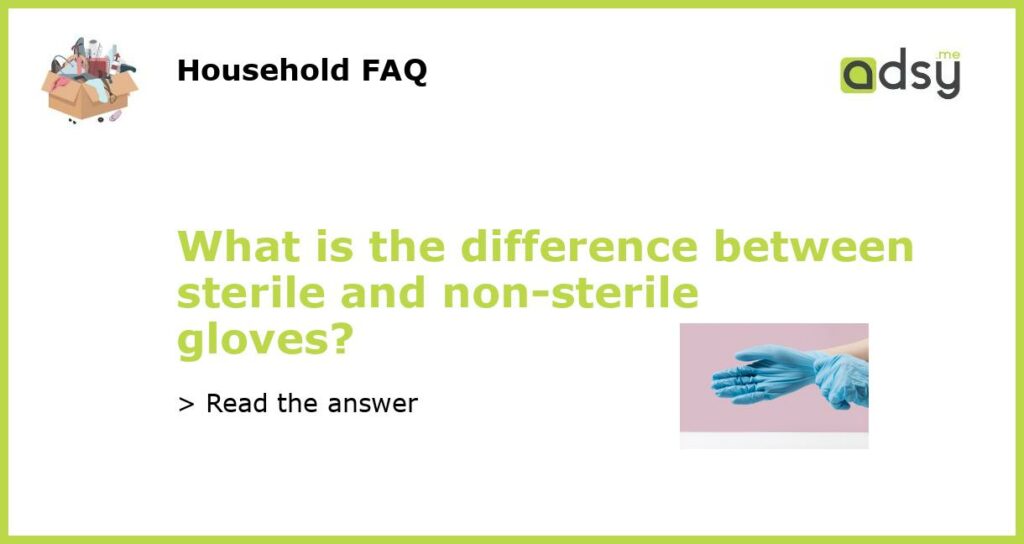Understanding Sterile and Non-Sterile Gloves
Sterile and non-sterile gloves are both types of disposable gloves that are commonly used in various industries and medical settings. While they serve similar purposes, there are key differences between the two. In this article, we will take a closer look at the characteristics and uses of sterile and non-sterile gloves.
Sterile Gloves: Definition and Uses
Sterile gloves are specifically designed to meet higher quality standards and are used in environments where it is crucial to maintain a high level of cleanliness and hygiene. These gloves are manufactured under strict conditions to ensure their sterility. They are typically used in medical procedures, sterile compounding, and other sensitive environments where the risk of contamination is high.
The production process for sterile gloves involves sterilizing the gloves themselves. This can be done through various methods, including gamma radiation, ethylene oxide sterilization, or autoclaving. Sterile gloves are individually packaged to maintain their sterility and often come with indicators to show whether or not the package has been compromised.
Non-Sterile Gloves: Definition and Uses
Non-sterile gloves, on the other hand, are not manufactured or intended to be sterile. These gloves are used in a wide range of industries, such as food service, janitorial services, and non-surgical healthcare settings. While they provide a protective barrier against contaminants, non-sterile gloves do not have the same level of sterility as their sterile counterparts.
Non-sterile gloves are typically made from materials such as vinyl, nitrile, or latex, and they are not subject to the same strict manufacturing processes as sterile gloves. They are commonly used for general tasks that do not require a sterile environment, such as handling non-hazardous chemicals, cleaning, or food preparation.
Key Differences between Sterile and Non-Sterile Gloves
There are several important differences between sterile and non-sterile gloves that should be considered when choosing the appropriate type of glove for a particular task or setting. Some of the key differences include:
1. Sterility: The most obvious difference is the level of sterility. Sterile gloves are manufactured to be free from microorganisms, while non-sterile gloves are not subject to the same sterilization processes.
2. Uses: Sterile gloves are primarily used in medical procedures and other sensitive environments where sterility is crucial. Non-sterile gloves, on the other hand, are used in a wide variety of industries and tasks that do not require a sterile environment.
3. Manufacturing process: Sterile gloves undergo a rigorous manufacturing process that includes sterilization, individual packaging, and quality control measures. Non-sterile gloves are not subject to the same level of manufacturing scrutiny.
Choosing the Right Gloves
When selecting gloves for a specific task or setting, it is important to consider whether sterility is necessary or not. In medical procedures or other environments where sterility is crucial, sterile gloves should be used to reduce the risk of contamination. Non-sterile gloves are suitable for general tasks that do not require a sterile environment.
It is also important to consider other factors such as the material of the gloves, the intended use, and any specific requirements or regulations that may apply. Consulting with a healthcare professional or occupational safety expert can help determine the most appropriate type of gloves for a particular situation.






